How to mainline cannabis: A complete manifolding guide
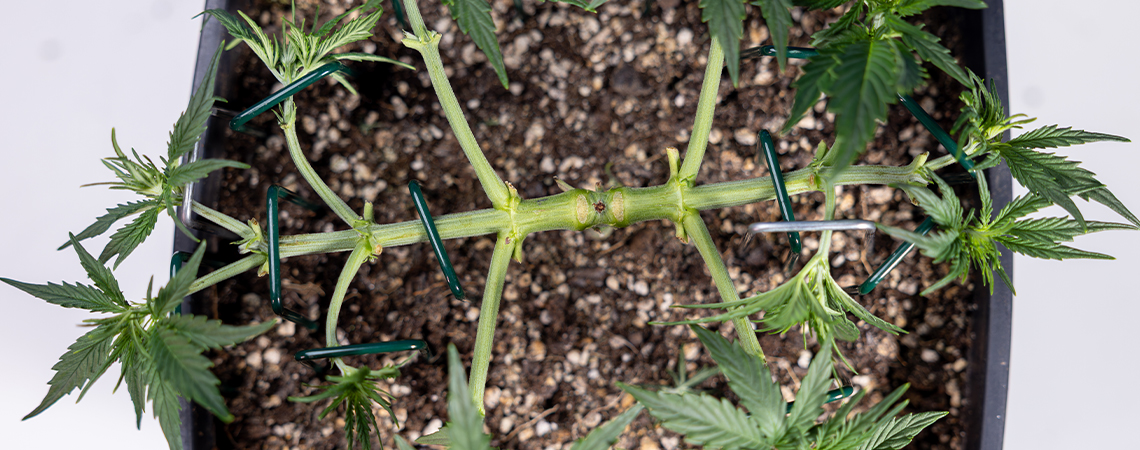
Come discover mainlining, or manifolding, the technique that maximises light, airflow, and yield to produce bigger, denser buds from a single plant. Learn the process step by step with Zamnesia's guide and revolutionise your grow setup.
Want to grow bigger, better buds from a single cannabis plant? Mainlining, also known as manifolding, is the advanced training method you didn't know you needed. By carefully topping and structuring your plant to create an even “manifold”, growers can maximise light exposure, improve airflow and dramatically boost yields. Whether you're a seasoned cultivator looking to refine your technique or an ambitious beginner ready to experiment, this guide will show you exactly how to mainline cannabis step by step, helping you build stronger, more productive plants with balanced, uniform colas.
What is mainlining (aka manifolding)?
.jpg)
In cannabis cultivation, mainlining, sometimes referred to as manifolding, is a structured plant training technique designed to create a symmetrical, efficient canopy. The idea is to “build” your plant from a single, central hub (or manifold) that evenly distributes energy to multiple main colas. This method combines elements of topping and low-stress training (LST) to produce balanced, uniform growth and larger, higher-quality buds.
Mainlining borrows its name from electrical and plumbing systems. In both cases, multiple outlets stem from a single main line. In cannabis, the principle is the same: you're directing nutrients and hormones evenly through a central stem, ensuring every bud site gets equal attention. “Manifolding,” a newer term often used interchangeably, more accurately describes the process of shaping a plant's main stem into a symmetrical “manifold.”
The primary goals of mainlining cannabis are structure, efficiency, and yield. By evenly spacing your colas and keeping the canopy flat, you improve airflow, light penetration, and nutrient distribution, all crucial for preventing mould, reducing stress, and maximising overall productivity. The result? A more vigorous, cleaner plant that delivers bigger, denser buds with minimal waste and easier maintenance.
Benefits of mainlining cannabis
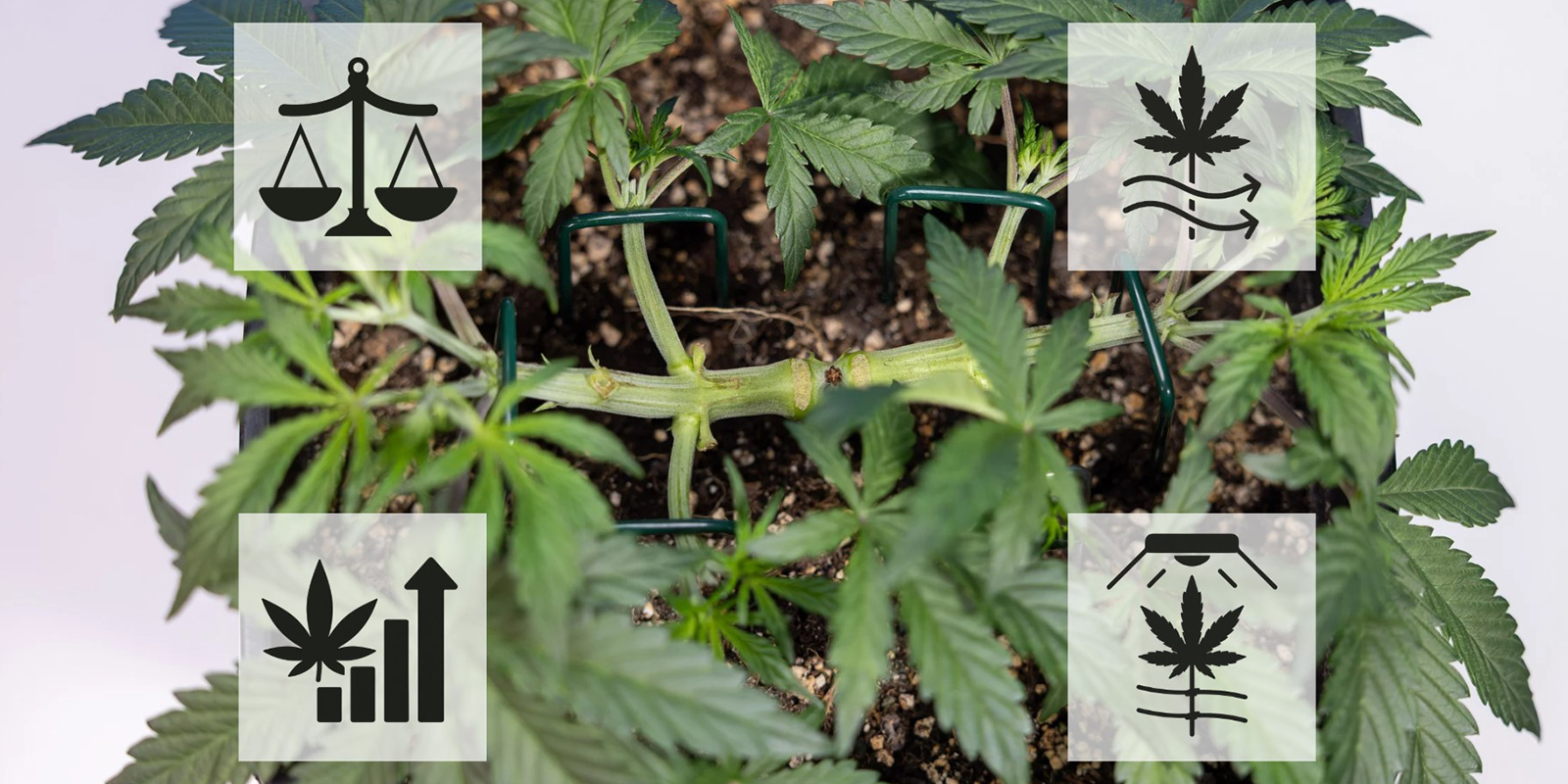
Mainlining isn't just about making your plants look tidy; it's a precision technique that can significantly enhance the health and performance of your cannabis crop. By guiding growth from a single manifold, you give your plants the ideal structure for thriving under artificial or natural light. Here are some of the perks.
Balanced growth and better airflow
Mainlining encourages a symmetrical structure where each cola receives equal amounts of light and nutrients. This balance prevents overcrowding, reduces the risk of mould and pests, and promotes even bud development from top to bottom. Improved airflow through the canopy also helps maintain consistent humidity and temperature.
Increased yields
Because each branch grows from the same starting point on the manifold, the plant distributes energy evenly across all main colas. This means no single bud dominates, resulting in multiple large, dense flowers instead of one oversized top cola and smaller lower buds. Growers who master mainlining cannabis often report significant yield boosts from the same number of plants.
Easier canopy management
A well-maintained plant is easier to train, prune, and harvest. Its flat, open canopy allows you to adjust lighting more efficiently and access all bud sites without damaging the plant. For indoor growers, this translates into less vertical stretch, improved space management, and a more predictable grow cycle.
In short, manifolding cannabis is a smart way to get the most out of your plants, maximising growth potential while keeping your garden clean, organised, and highly productive.
When to start mainlining cannabis
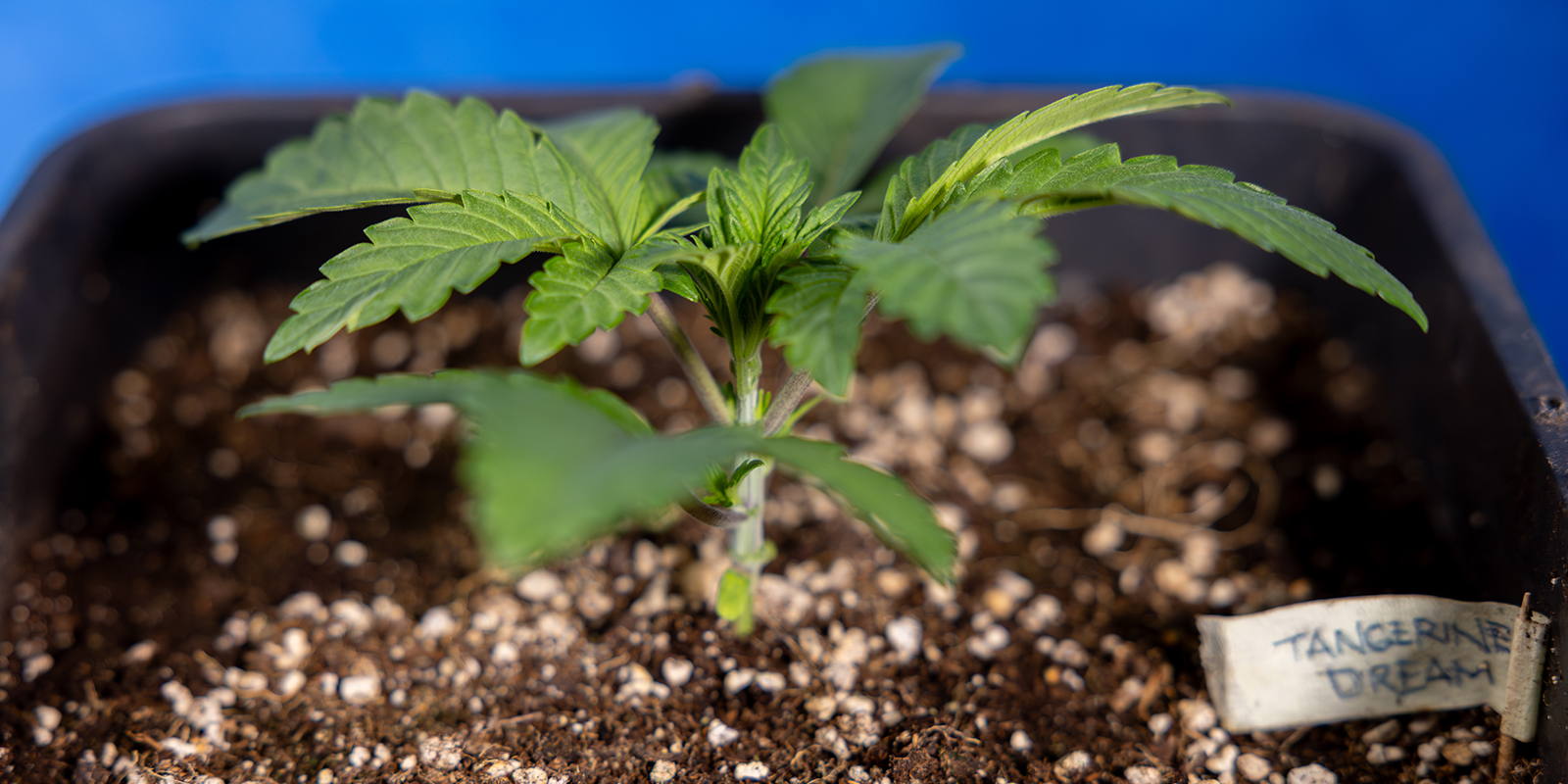
Timing is everything when it comes to mainlining cannabis. Starting too early can stunt your plant's growth, while waiting too long can make training more difficult and stressful. The goal is to begin when your plant is strong enough to recover from topping, but still young enough to shape easily.
For photoperiod cannabis plants, the ideal time to start mainlining is when they have developed 5–6 nodes. At this stage, the stem is thick enough to handle a clean cut, and the plant can recover quickly with minimal stress. Once topped down to the third node, new symmetrical growth will form; this is the foundation of your manifold.
With autoflowering cannabis, however, the window for training is much narrower. Autoflowers automatically switch from the vegetative to flowering phase, often within 3–4 weeks of germination. Because of this short timeline, heavy training like mainlining is risky and may reduce yield instead of boosting it. Instead, use a light manifolding approach or try low-stress training (LST) methods to gently guide growth without slowing development.
For a deeper look into the differences between photoperiod and autoflowering strains, check out our dedicated guide.
In essence, mainlining should begin once your cannabis plant is mature enough to handle topping but still flexible enough to train. This is typically around week three to four of vegetative growth for photoperiod strains.
Equipment needed
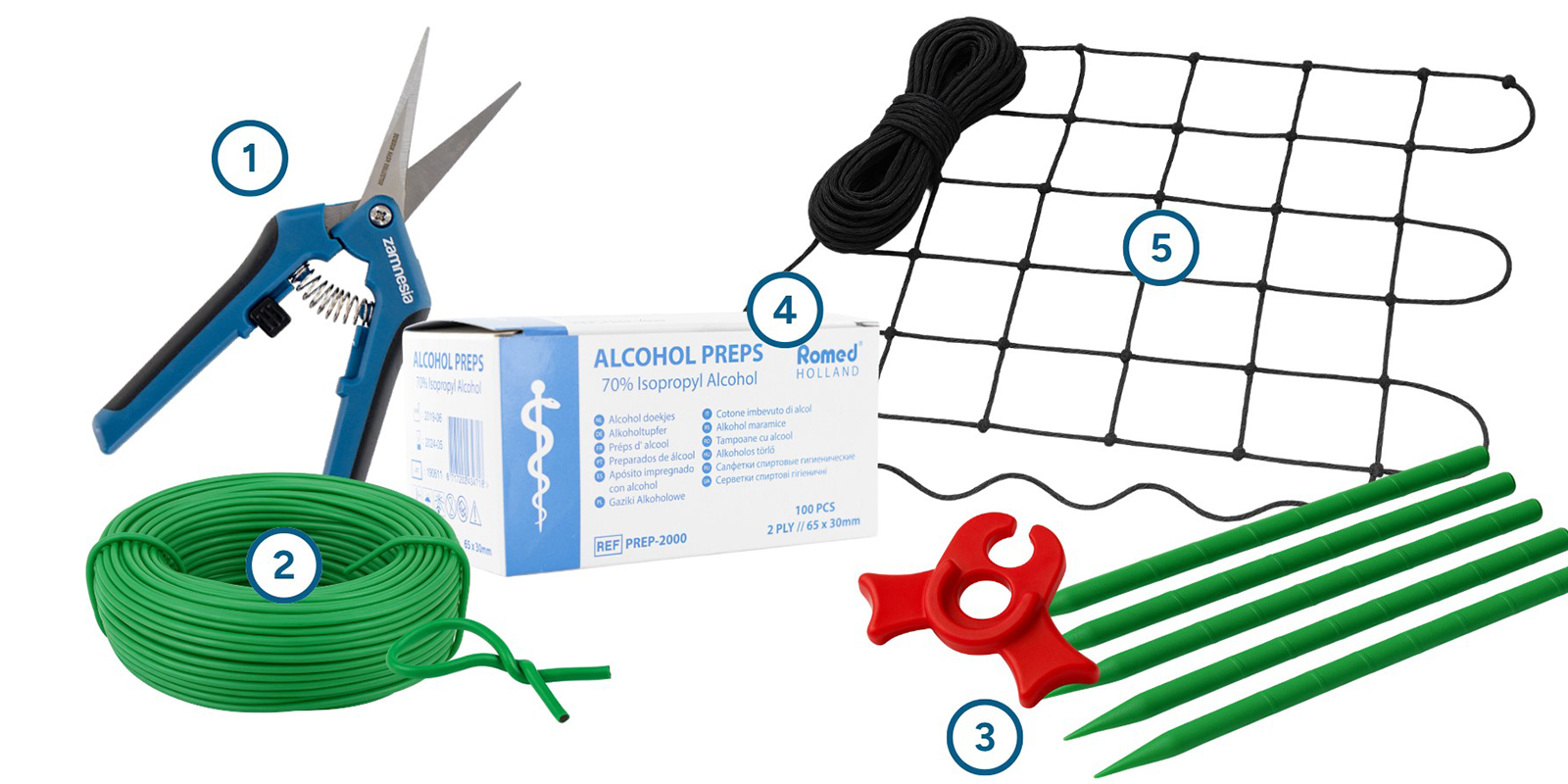
To perform manifolding cannabis successfully, you'll need a few essential tools to keep your plants healthy and your process efficient:
- Sharp, sterile pruning shears or scissors: For precise topping and trimming without damaging the stem.
- Soft plant ties or coated wire: To gently secure branches as you spread them into position.
- Garden stakes or training clips: Useful for maintaining an even canopy as new growth appears.
- Isopropyl alcohol: For disinfecting tools between cuts to prevent infections or disease.
- Support stakes or mesh netting (optional): To keep the manifold stable as the colas grow heavier during flowering.
Having the right equipment on hand ensures cleaner cuts, faster recovery, and a smoother training process overall, which are key ingredients for a strong, high-yielding mainlined plant.
How to mainline cannabis
Now that you know what mainlining cannabis is and when to start, let's walk through the full process step by step. This technique may seem complicated at first, but once you understand the structure, it becomes a simple, repeatable method that produces outstanding results. The following steps outline how to build a clean, balanced manifold that channels energy evenly into multiple strong, productive colas.
Step 1: Grow the plant to 5–6 nodes
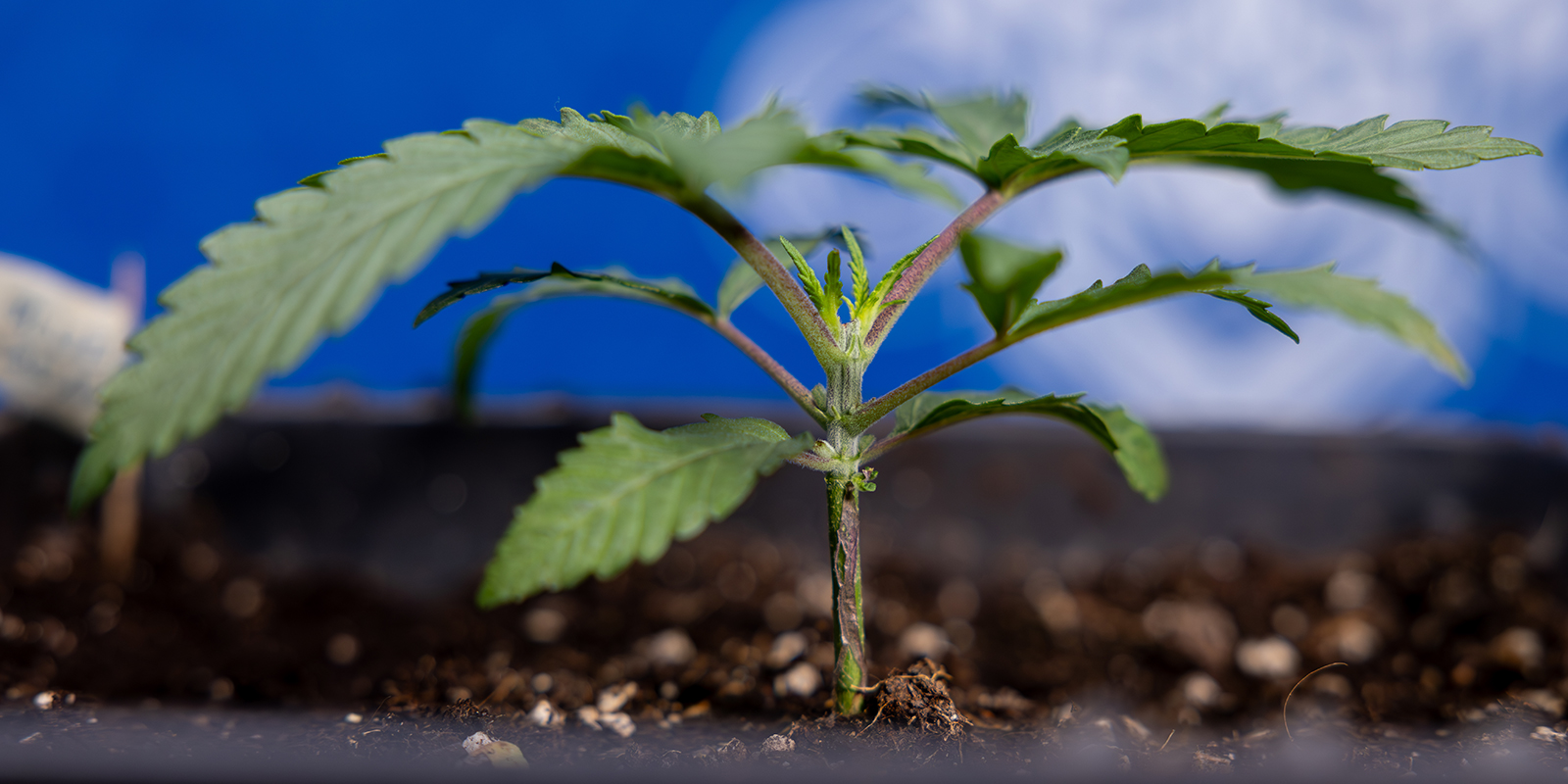
Allow your cannabis plant to develop five to six nodes. This ensures the stem is thick enough to handle topping and that the root system is well-established. At this stage, the plant is healthy, flexible, and capable of bouncing back quickly after training. Avoid mainlining seedlings that are too young, as immature plants will struggle to recover and may experience stunted growth.
Step 2: Top down to the 3rd node (creating the manifold)
.jpg)
Once the plant reaches the right size, use sterilised scissors or pruning shears to top the main stem down to the third node. This cut removes the upper growth, forcing the plant to redirect its energy into the two remaining branches at that node. These branches will become the foundation of your manifold, the central hub from which all future colas will grow.
After topping, remove any small shoots emerging from the third node's base to keep the structure clean. You should now have two symmetrical main branches forming a perfect “Y” shape, ready for further training.
Step 3: Remove lower growth
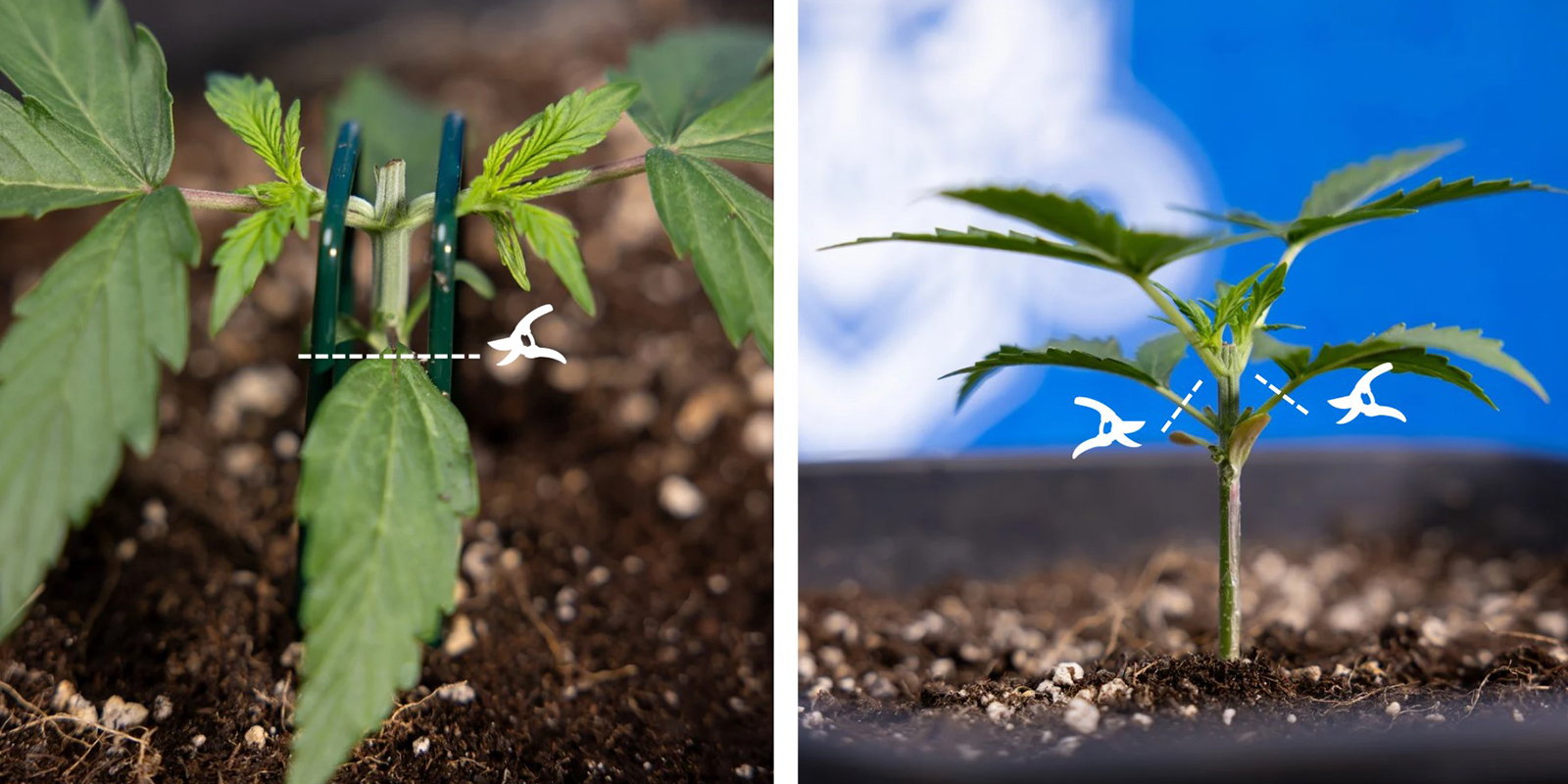
Next, prune away all growth below the third node. These lower branches and leaves won't receive enough light once the canopy expands and will only sap energy from your main colas. Removing them early directs all resources toward the two primary branches, ensuring balanced, focused development.
Be careful not to over-prune. Leave a few fan leaves to help the plant photosynthesise and recover from topping.
Step 4: Tie down the new mains
Once the two main branches start to stretch, gently tie them down horizontally using soft plant ties, coated wire, or training clips. Be sure to secure each branch so it forms a flat “T” shape, as this helps to create a level canopy where future colas will grow evenly.
The goal here is to train the mains outward, allowing light to reach every node. Keep adjusting ties as the plant grows to maintain even spacing and prevent one side from dominating the other. A balanced canopy at this stage lays the groundwork for high yields and uniform bud quality.
Step 5: Repeat the topping process for 8 colas
When each of the two main branches produce three new nodes, it's time to top again. This time, you should cut above the first node on each branch, as this will double the number of mains from two to four. Repeat the process once more to create eight evenly spaced colas, the standard setup for a fully mainlined plant.
Each round of topping should be followed by a recovery period of at least five to seven days to allow the plant to heal and stabilise. Patience is key; rushing can cause stress, slow growth, or deformities in the manifold.
Once your structure is complete, you can shift focus to canopy maintenance by removing small interior shoots, adjusting ties, and preparing for the flowering stage.
Mainlining autoflowers: Can it be done?
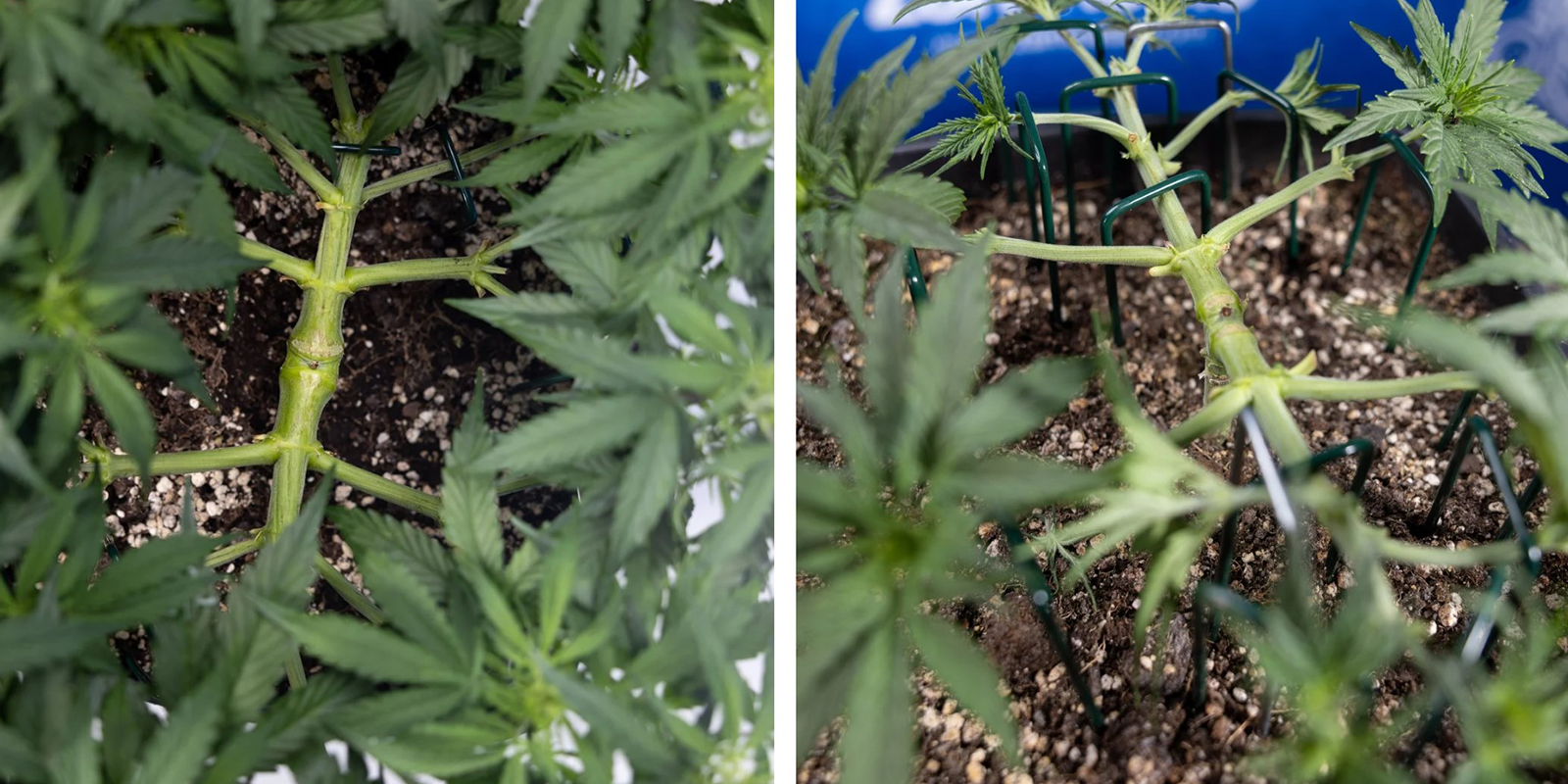
The short answer is yes, but only with care. While mainlining cannabis is a proven way to boost yields in photoperiod plants, autoflowering cannabis doesn't always respond well to the stress this technique involves. Autoflowers, as the name suggests, begin flowering automatically within three to four weeks, giving them far less time to recover from topping or pruning. Any major setback can therefore lead to smaller, stunted plants.
That said, some growing experts recommend a modified, low-stress version of manifolding for autos. Instead of full mainlining with multiple toppings, they suggest performing just one early topping (around the fourth or fifth node) to split the plant into two main branches. From there, use soft ties or clips to gently spread these branches apart, creating better airflow and light distribution without slowing growth.
To improve your chances of success, start by using vigorous, resilient genetics that can handle light training. Then, make sure your growing conditions are perfect, with a steady temperature, strong light, and balanced nutrients. Combining this gentle approach with some LST techniques can mimic the structural benefits of mainlining while keeping your plants happy and productive.
The bottom line is that if you want to experiment safely, choose fast, hardy autoflowering strains bred for adaptability and recovery. Browse autoflowering cannabis seeds at Zamnesia to find the best options for your next grow.
Mainlining vs. topping vs. LST
Each plant training method has its strengths, and the best choice depends on your goals, strain type, and growing environment. Here's how mainlining, topping, and LST compare in practice.
Mainlining
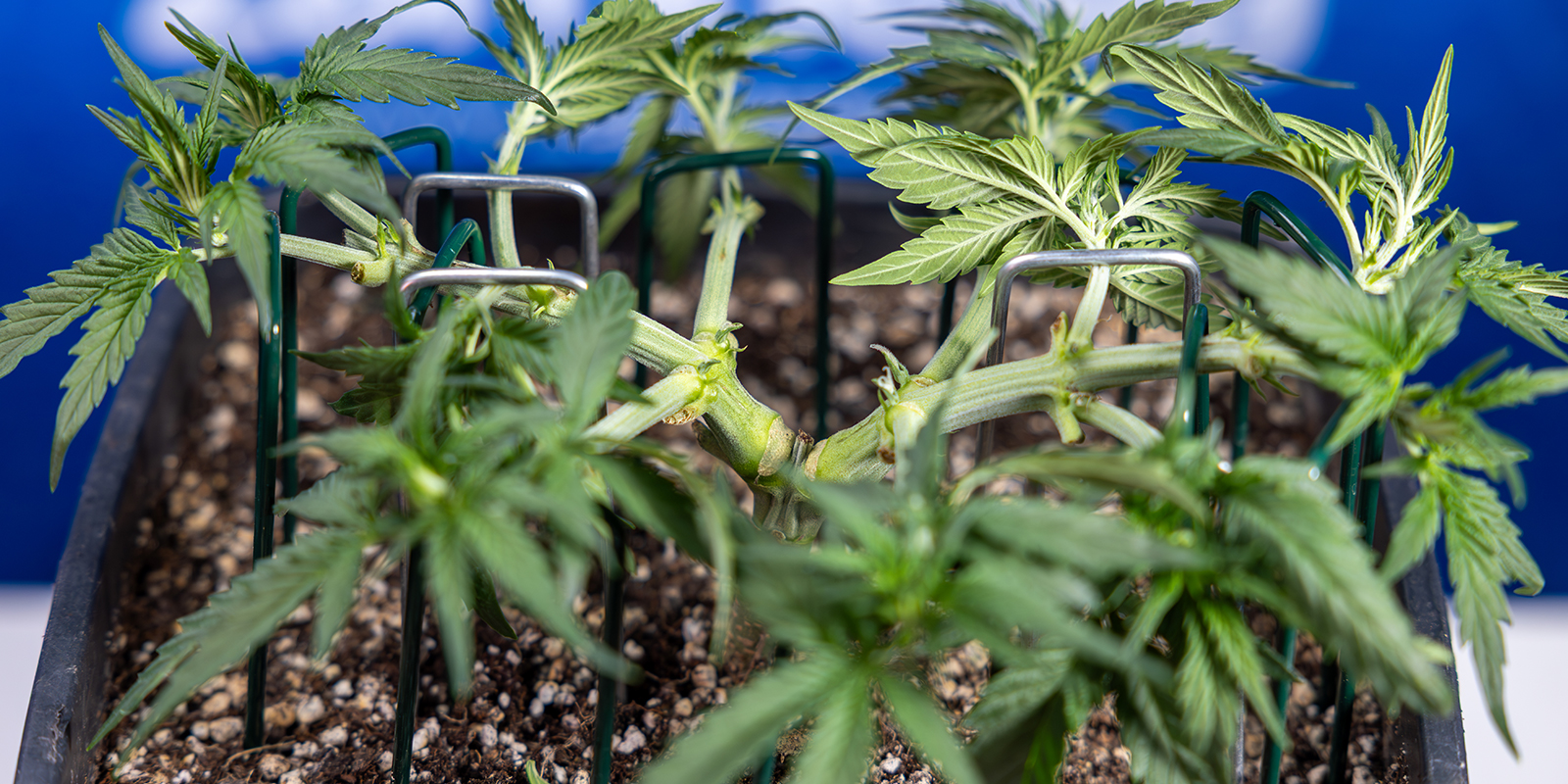
This structured, high-stress technique combines topping and training to create a symmetrical, efficient plant shape. As mentioned, it's perfect for photoperiod plants and growers who want maximum yield and control. Mainlining provides a balanced canopy, excellent airflow, and uniform bud size, but it also requires patience and recovery time between toppings.
Topping
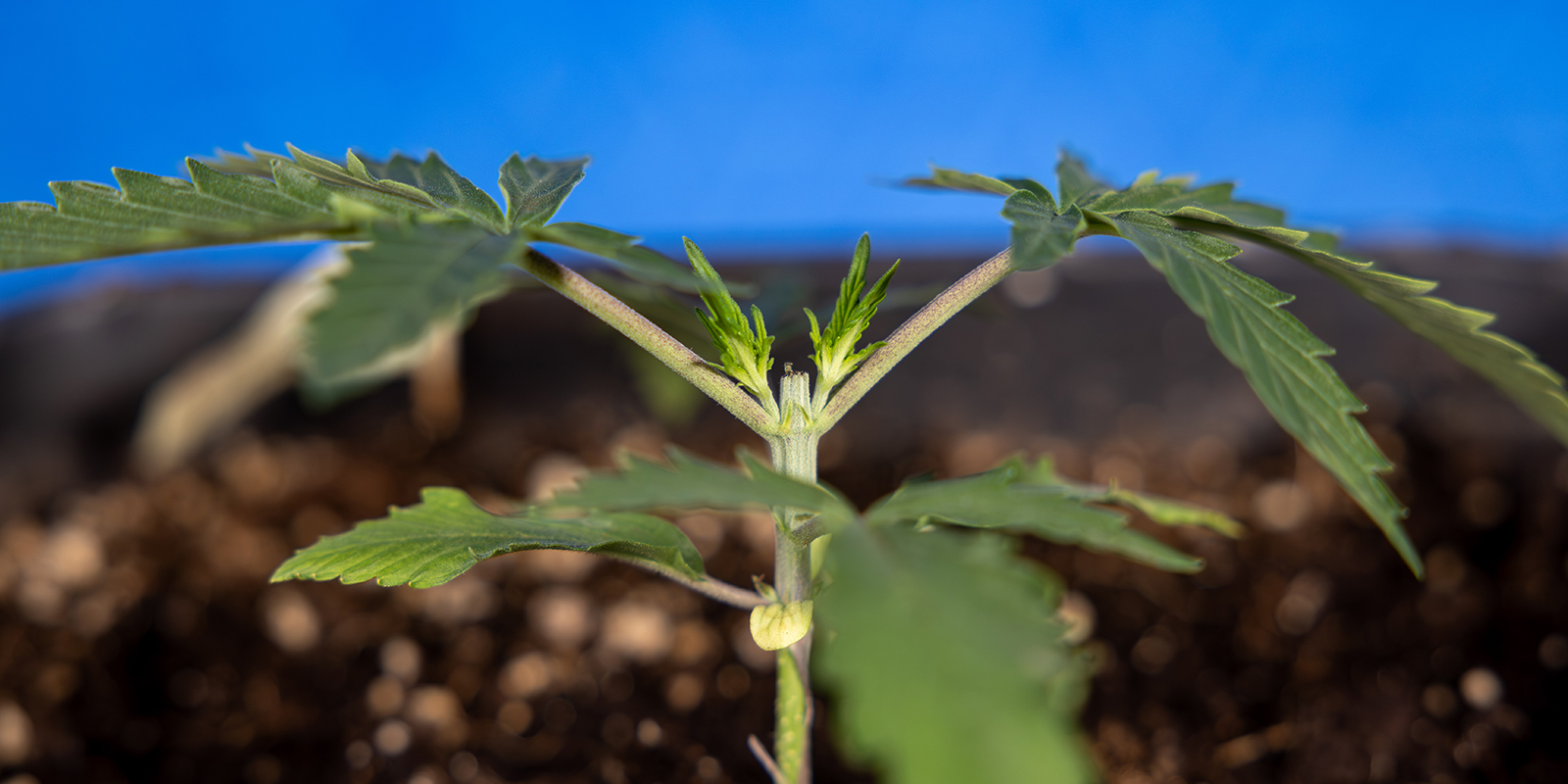
A more straightforward, faster method that involves cutting off the main shoot to encourage multiple tops. It's an excellent method for beginners or those who want moderate structure improvement without fully committing to a manifold. While topping increases yield and bushiness, it can create uneven growth if not combined with further training. It's less time-intensive than mainlining but offers less symmetry and control.
LST
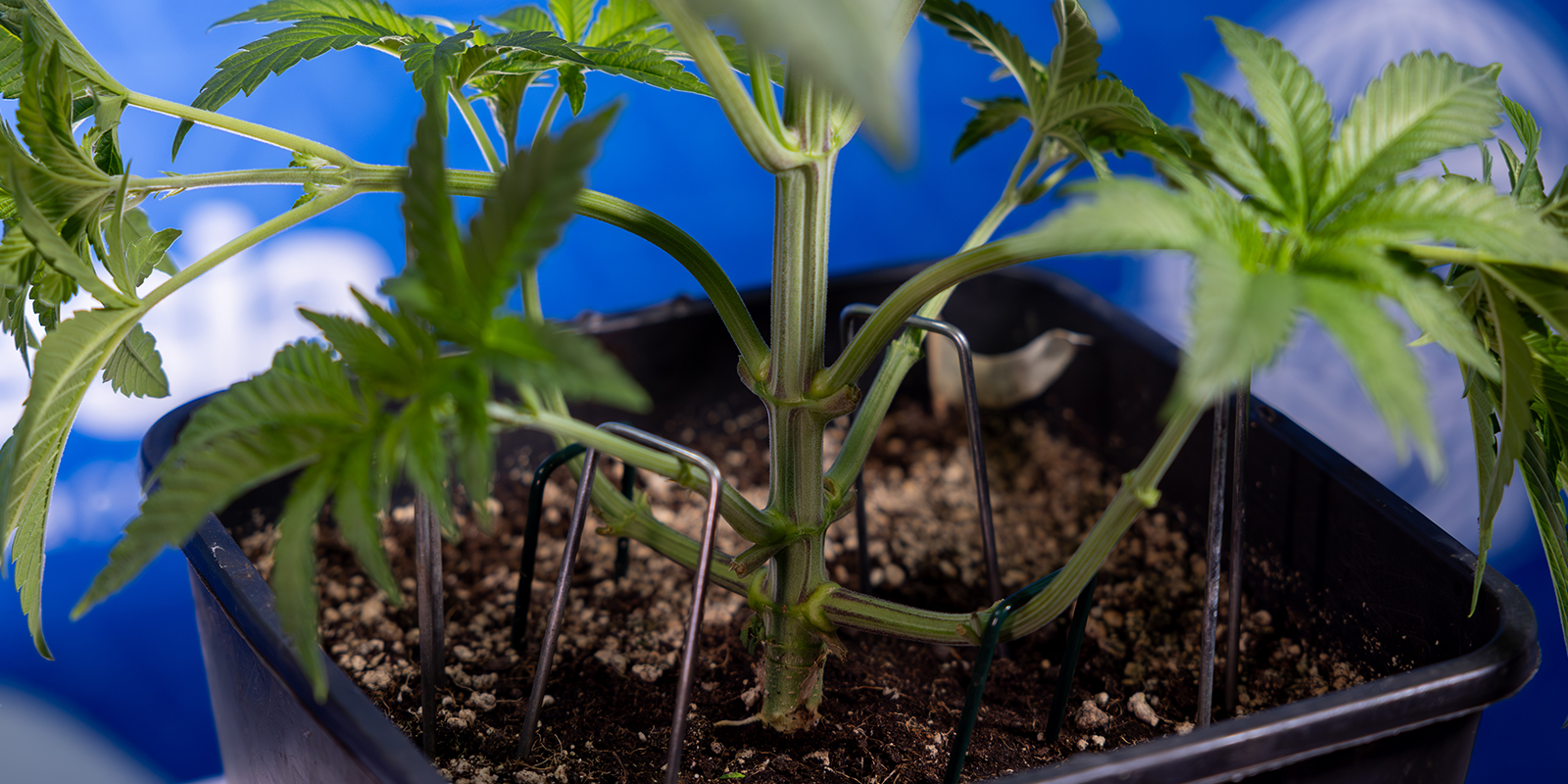
This gentle method uses bending and tying instead of cutting. It's ideal for autoflowers or growers who prefer minimal plant stress. LST encourages light penetration and even canopy development, but it takes regular adjustments as the plant grows. The results are usually faster and safer, though slightly less dramatic than full manifolding cannabis.
As a rule of thumb:
- Choose mainlining for maximum yield and symmetry (best for photoperiods).
- Choose topping for quick structure improvement with minimal effort.
- Choose LST for safe, flexible shaping, especially with autoflowers.
For more information on LST and other training techniques, take a look at our dedicated article hub.
Common mistakes to avoid
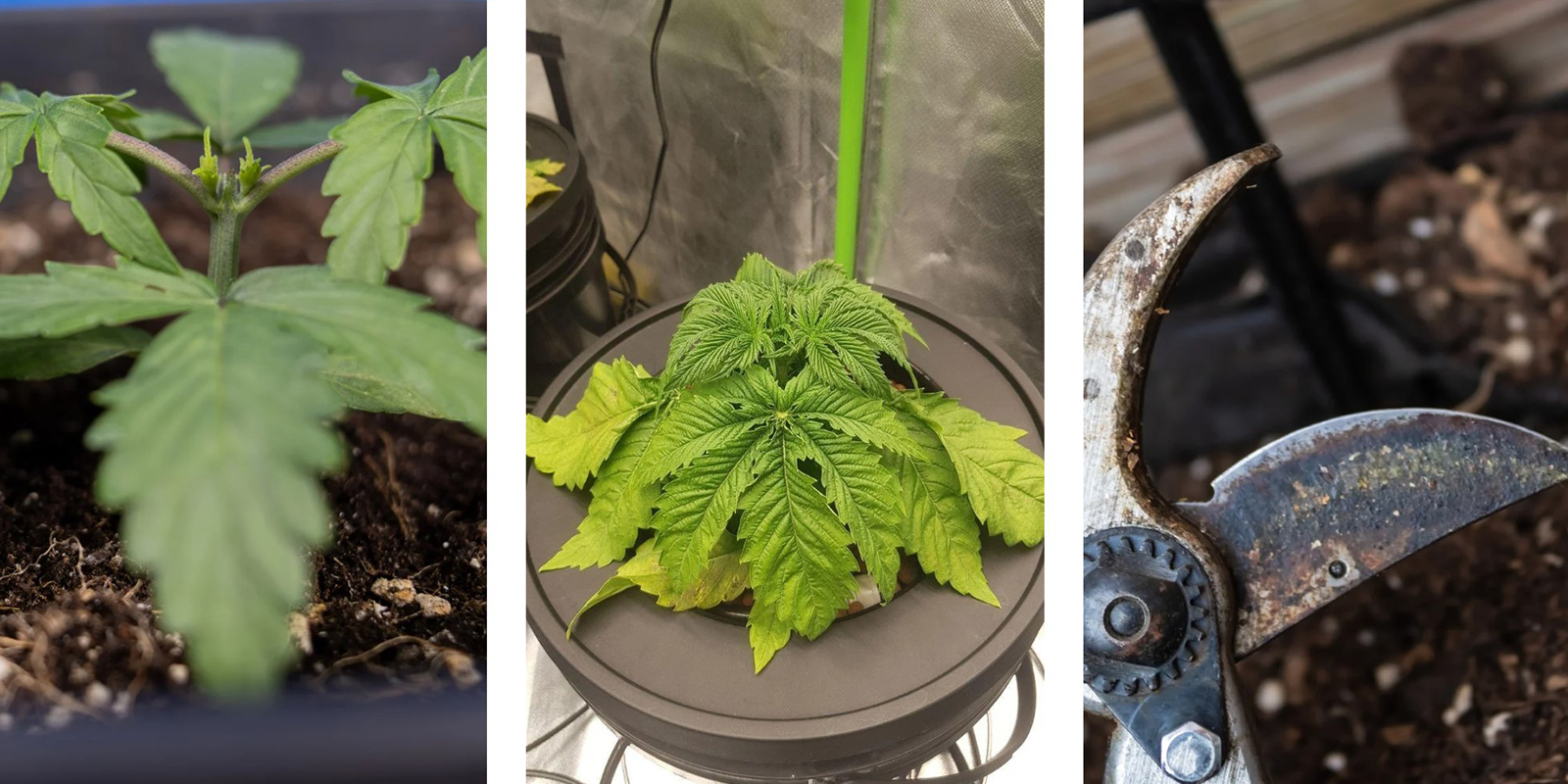
Even with a clear plan, many growers make small errors that can undo the benefits of mainlining cannabis. Avoiding these pitfalls will keep your plants healthy and help you achieve that perfect symmetrical structure.
Topping too early
One of the biggest mistakes beginners make is topping their plants before they have developed enough nodes or strength to recover. If you top a seedling too soon, before it reaches the aforementioned fifth or sixth node, you risk stunting its growth or causing permanent damage. Wait until the stem is sturdy and the root system is well-established before making that first cut.
Poor recovery time
Mainlining is a form of high-stress training, so plants will need time to heal after each topping. Rushing through stages or topping again too soon can shock the plant, slowing development and reducing yield. Always allow five to seven days (or until you see new healthy growth) between each step to ensure full recovery before proceeding.
Not using clean tools
Using dull or dirty scissors may seem minor, but it can introduce bacteria and lead to infections that harm your plant. Always use sharp, sterilised tools and wipe blades with isopropyl alcohol before and after each cut. Clean cuts heal faster and lower the risk of disease, keeping your manifold strong and healthy throughout the grow.
Mainlining rewards patience and precision. By giving your plants time to recover, using sterile tools, and avoiding early stress, you'll build a resilient structure capable of supporting heavy, uniform yields.
Mainline your way to bigger buds
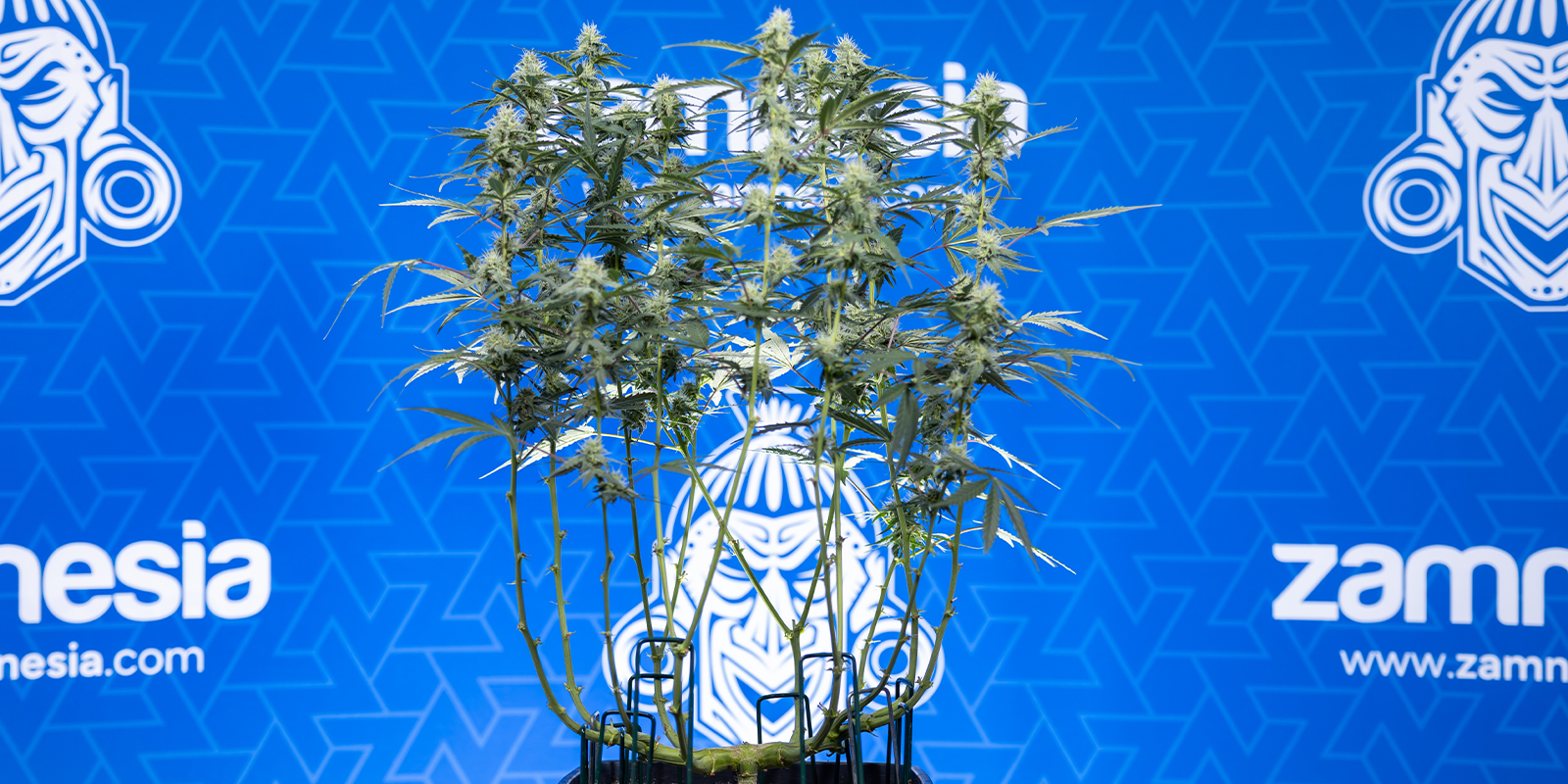
Mastering mainlining takes patience and practice, but the payoff is undeniable, making for stronger plants, bigger buds, and perfect even canopies. By combining topping, training, and careful timing, you're essentially teaching your plants to work smarter, not harder. Whether you're shaping photoperiods for maximum yield or applying a gentle manifold to autoflowers, the results speak for themselves: a tidy, balanced garden filled with high-quality colas.
Here's a quick checklist of key dos and don'ts to keep your manifolding journey smooth and successful.
Do:
- Wait until your plant has 5–6 nodes before topping.
- Use sterile, sharp tools for every cut.
- Allow 5–7 days of recovery between toppings.
- Keep branches tied down evenly for balanced growth.
- Maintain good airflow and strong lighting across the canopy.
Don't:
- Top seedlings too early or rush between stages.
- Over-prune.
- Neglect tool hygiene (infection risk is real).
- Attempt full mainlining on sensitive autoflower strains.
- Forget to adjust ties as your plant grows and thickens.
With the right approach, mainlining becomes more than a technique; it's a reliable path to bigger yields and a cleaner, more efficient grow. Equip yourself with the proper tools and seeds, and you'll soon see why this structured method has become a favourite among experienced cultivators.
Explore the full range of grow tools and accessories to make your mainlining setup easier, cleaner, and more efficient. For more advanced pruning, shaping, and training methods, discover our complete guide to cannabis training techniques and take your growing skills to the next level.





 United States
United States

















